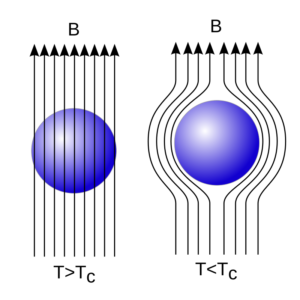Microwave bench
Microwave measurements
- The measurement techniques at microwave frequencies are vastly different from those used at low frequencies.
- At microwave frequencies our main focus is on electromagnetic fields.
- Thus, the measurement of power flow in a system specifies the product of the electric and magnetic fields and the measurement of impedance determines many quantities measured at microwave frequencies are relative and often it is not necessary to know their absolute values.
Various components of a microwave bench

Signal generator
- A microwave source used is either a Gun diode oscillator or a reflex klystron. Its output is of the order of few milliwatts. The signal output obtained from these sources is generally square wave modulator at audio frequency of 1 kHz.
Isolator
- This microwave device permits unattenuated transmission in one direction (forward direction), but provides very high attenuated in the reverse direction (backward direction).
- This is generally used between the source and rest of the setup to avoid overloading of the source due to reflected power.
Attenuator
- Attenuation is the gradual loss in intensity of any kind of flux through a medium. It is opposite of amplification.
- Attenuator is an electronic device which reduces the amplitude or power of a signal without causing a big distortion to its waveform.
- An attenuator is the opposite of an amplifier. An amplifier provide gain, whereas an attenuator reduces the gain or it provide a gain less than 1.
Types of attenuator
- Digital attenuators
- Passive attenuators
- Variable attenuators
Frequency meter
- The frequency of microwave signal can be read directly on the wave meter, known as frequency meter.
- The heart of the frequency meter is the resonant cavity and for any particular cavity size, a single frequency resonance will be supported.
- If the cavity size can be varied, the resonance at a whole range of frequencies may be obtained.
- The cavity is connected to the source of energy source whose frequency is to be measured through a section of waveguide and a port or window allows some energy to enter the cavity.
- It is often said to be measured by the cavity and hence the common name absorption frequency meter is used.
- The maximum absorption takes place when the cavity is tuned exactly to the frequency of the energy being measured.
- For greatest accuracy the Q of the cavity is made very high.
- It indicates that the tuned circuit is extremely sharp, absorbing a maximum of energy at the exact frequency and much less at slightly different frequencies.
Slotted section
- An alternate method of determining the frequency is to use a slotted section.
- It is primarily a section of waveguide having dimensions suitable for the frequency range in use.
- Figure shows the slotted section in which the longitudinal slot in the waveguide helps in making it a valuable test device.
- The exploring probe can move along the interior of the waveguide through the slot. In this way the electric field due to transmitted and reflected energy can be sampled.
- We can locate the positions of two adjacent nulls by moving the probe along the slotted line over the Vernier scale.
- These two positions are separated by half a guide wavelength λg/2.
The free space wavelength λ0 can be calculated using the relation
- Here λc = cut off wavelength

Detector mount
- The ordinary semiconductor diodes have large function capacitance and large transit time which make them unsuitable for microwave work.
- The specially designed diodes are (i) point contact diode and (ii) metal-semiconductor Schottky barrier diode.
- These diodes exhibit little capacitance and their negligibly small transit time are used at microwave frequencies.
Point contact (Whisker diode)
- It is fabricated on a thin wafer of poly-crystalline p-type silicon, normally doped with aluminum.
- The tungsten whisker is etched electrolytically to get a tip of around 10-12 μm diameter.
The whisker makes pressure contact with silicon wafer.

In the equivalent circuit
- R = Non-linear resistance of the barrier.
- r = Ohmic spreading resistance caused by restricted current flow between the metal whisker and semiconductor
- C = Barrier capacitance.
- Detector diode may be mounted in a co-axial line or a waveguide depending on the type of measurement system to be used.
- The diode is located and oriented in the co-axial line or waveguide so that a good impedance match is obtained.
- The distance between the shorted end and the diode is either fixed at λg/4 or may be varied to tune the detector better, when the detector is provided with a tunable short.
Best tuning is indicated by the maximum output current measured at the micrometer connected at BNC connector.

Voltage standing wave ratio (VSWR):
Standing wave
- When two sets of propagating wave trains of same type, having the same amplitude and same time period move along the same straight line in opposite directions superimpose, a new set of waves are formed. These new sets of waves are known as standing waves or stationary waves.
Standing wave ratio (SWR)
- In waveguide transmission, relative value of the minimum to the maximum is more important as compared with the height of the wave because it is not necessary that the maximum of the wave may denote the levels of the transmitted energy.
- The relative value, which is irrespective of the height of the wave, is called the standing wave ratio. The standing wave ratio is measured in terms of voltage is called voltage standing wave ratio (V.S.W.R.).
Voltage standing wave ratio (VSWR):
- It is numerically equal to the ratio of the highest to the lowest point in the wave.
VSWR = Emax / Emin
To know in detail about Microwave bench click here.
Our other websites
Our YouTube channels


